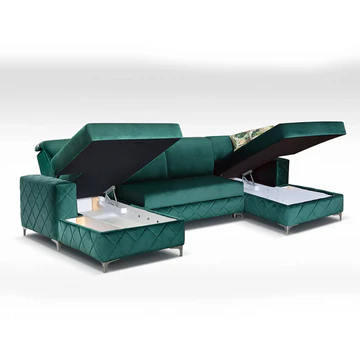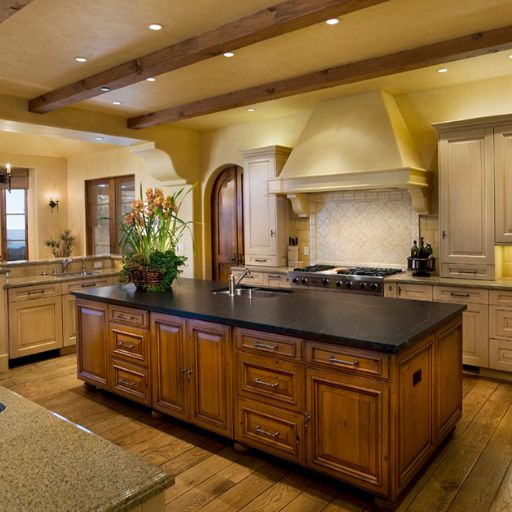Introduction
In the world of interior design, flooring plays a pivotal role in setting the tone and ambiance of a space. Among the myriad of flooring options available, vinyl flooring stands out for its versatility, durability, and aesthetic appeal. High-quality vinyl flooring can transform any room, adding a touch of elegance and functionality while offering numerous practical benefits. In this comprehensive guide, we will explore the various aspects of vinyl flooring, including its benefits, types, design options, installation process, and maintenance tips, to help you make an informed decision for your home or office.
The Appeal of Vinyl Flooring
Vinyl flooring has gained immense popularity in recent years, thanks to its impressive combination of style and performance. Here are some of the key reasons why high-quality vinyl flooring is an excellent choice for transforming your space:
- Versatility: Vinyl flooring is available in a wide range of designs, colors, and patterns, making it suitable for any interior style. Whether you prefer the look of hardwood, stone, or tile, there is a vinyl flooring option that can mimic these materials while offering added benefits.
- Durability: High-quality vinyl flooring is designed to withstand heavy foot traffic, making it an ideal choice for both residential and commercial spaces. It is resistant to scratches, dents, and stains, ensuring that your floors remain beautiful and functional for years to come.
- Water Resistance: Unlike traditional hardwood or laminate flooring, vinyl flooring is highly water-resistant. This makes it an excellent choice for moisture-prone areas such as kitchens, bathrooms, and basements.
- Comfort: Vinyl flooring provides a softer and warmer underfoot feel compared to harder flooring options like tile or stone. It is also available with additional cushioning layers, enhancing comfort and reducing noise levels.
- Easy Maintenance: One of the most significant advantages of vinyl flooring is its low maintenance requirements. Regular sweeping and occasional mopping are all that is needed to keep your vinyl floors looking pristine.
Types of Vinyl Flooring
Vinyl flooring comes in various types, each offering unique features and benefits. Here are the most common types of vinyl flooring:
- Luxury Vinyl Plank (LVP): LVP is designed to mimic the look of hardwood flooring. It comes in plank form, offering a realistic wood appearance with the added benefits of vinyl. LVP is available in various wood species, colors, and textures, making it a versatile choice for any room.
- Luxury Vinyl Tile (LVT): LVT resembles natural stone or ceramic tiles. It is available in tile form and offers the same realistic look and texture as its natural counterparts. LVT is an excellent option for areas where you want the elegance of stone or tile without the associated maintenance.
- Sheet Vinyl: Sheet vinyl comes in large, continuous rolls, providing a seamless look when installed. It is available in a wide range of designs, including wood, stone, and abstract patterns. Sheet vinyl is a cost-effective option for covering large areas quickly and efficiently.
- Vinyl Composition Tile (VCT): VCT is a durable and affordable option commonly used in commercial spaces. It consists of vinyl chips embedded in a binder, creating a sturdy and resilient surface. VCT is available in various colors and patterns, allowing for creative design possibilities.
Design Options
High-quality vinyl flooring offers a plethora of design options, allowing you to create the perfect look for your space. Here are some popular design trends and patterns in vinyl flooring:
- Wood Look: Vinyl flooring that mimics the appearance of hardwood is a timeless choice. From classic oak and maple to exotic species like teak and mahogany, wood-look vinyl flooring adds warmth and elegance to any room.
- Stone and Tile Look: For a sophisticated and luxurious aesthetic, consider vinyl flooring that replicates the look of natural stone or ceramic tiles. Options include marble, slate, travertine, and porcelain, each offering a unique texture and finish.
- Geometric Patterns: Geometric patterns, such as herringbone, chevron, and hexagon, are trending in modern interior design. These patterns add visual interest and a contemporary touch to your flooring.
- Abstract Designs: If you want to make a bold statement, explore vinyl flooring with abstract designs and artistic patterns. These designs can serve as a focal point in your room, adding personality and flair.
- Textured Finishes: High-quality vinyl flooring is available in various textured finishes, including hand-scraped, distressed, and embossed. These textures enhance the realism of the flooring and add a tactile element to your space.
Installation Process
Installing high-quality vinyl flooring is a straightforward process, but it requires attention to detail to achieve a flawless result. Here is an overview of the installation steps:
- Preparation: The subfloor must be clean, dry, and level before installation. Any existing flooring should be removed, and the subfloor should be inspected for damages that need repair.
- Acclimation: Vinyl flooring should be acclimated to the room’s temperature and humidity levels for at least 48 hours before installation. This helps prevent expansion and contraction after installation.
- Layout: Plan the layout of your vinyl flooring to ensure a balanced and visually appealing result. This involves measuring the room, marking the starting point, and arranging the planks or tiles in the desired pattern.
- Installation Method: The installation method depends on the type of vinyl flooring. LVP and LVT often feature a click-lock system, allowing for a floating installation. Sheet vinyl is typically glued down, while VCT is installed using adhesive.
- Cutting and Fitting: Cut the vinyl planks, tiles, or sheets to fit around obstacles and along the edges of the room. Use a utility knife or a vinyl cutter for precise cuts.
- Securing: Follow the manufacturer’s instructions for securing the vinyl flooring. For click-lock systems, ensure the planks or tiles are tightly locked together. For glue-down installations, apply the adhesive evenly and press the vinyl firmly into place.
- Finishing Touches: Trim any excess vinyl along the edges and install baseboards or molding to cover the gaps between the flooring and the walls.
Maintenance Tips
Maintaining high-quality vinyl flooring is simple and requires minimal effort. Here are some tips to keep your vinyl floors looking their best:
- Regular Cleaning: Sweep or vacuum your vinyl flooring regularly to remove dust and dirt. Use a damp mop with a mild vinyl floor cleaner for deeper cleaning. Avoid using abrasive cleaners or excessive water.
- Protective Measures: Place doormats at entryways to reduce the amount of dirt and debris brought into your home. Use furniture pads to prevent scratches and dents from heavy furniture.
- Avoid Harsh Chemicals: Harsh chemicals and solvents can damage the finish of vinyl flooring. Stick to cleaning products specifically designed for vinyl floors.
- Immediate Spill Cleanup: Wipe up spills immediately to prevent staining and moisture damage. Use a soft cloth or paper towel to blot the spill and clean the area with a vinyl floor cleaner.
- Prevent Sun Damage: Prolonged exposure to direct sunlight can cause vinyl flooring to fade. Use curtains or blinds to protect your floors from UV rays, or consider using UV-protective window film.
- Periodic Maintenance: High-quality vinyl flooring may require periodic maintenance, such as applying a vinyl floor polish or sealer. Follow the manufacturer’s recommendations for maintaining the finish and protecting the surface.
Conclusion
High-quality vinyl flooring is a versatile and stylish choice for transforming any space. With its wide range of design options, durability, and low maintenance requirements, vinyl flooring offers the perfect blend of aesthetics and practicality. Whether you prefer the timeless look of wood, the elegance of stone, or the creativity of abstract patterns, there is a vinyl flooring option to suit your style and needs. By following proper installation and maintenance practices, you can enjoy the beauty and functionality of vinyl flooring for years to come. Transform your space with high-quality vinyl flooring and experience the difference it can make in your home or office.


